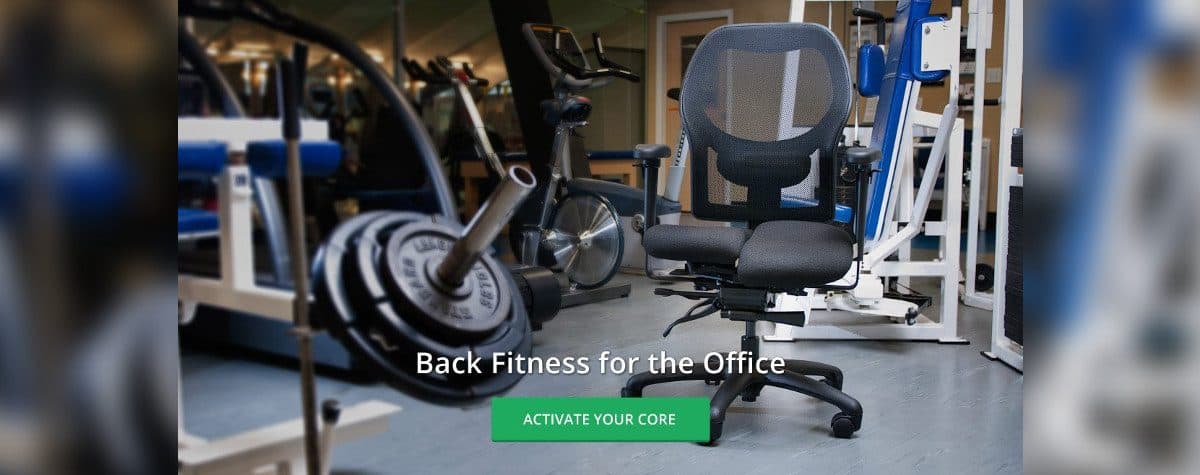
Proin sed quam hendrerit nonummy
April 29, 2014
Smartphone app aimed at reducing sedentary time
July 17, 2014Thank-you for your introduction to the Sedentary Behaviour Research Network. This is a fantastic pooling of research and expertise to help address this deadly by-product of inactivity in modern society. We know the simple solution to the problem: sit less, move more. However, given the fact that it will be difficult to eliminate all sitting from the office environment, a logical component of any anti-sedentary strategy will be to increase the level of activity engaged in while sitting.
At Core-flex Seating Technologies we have focused on identifying activities/movements which specifically promote postural endurance. Researchers have proposed that the primary cause of the metabolic depression associated with sedentary behaviour is that when sitting we “stop the contraction of the antigravity (postural) muscles” (Owen). Levine states that the activity of holding ourselves upright, along with other non-exercise activities such as walking and moving, is how we burn most of our calories during the day. Hamilton concludes that “any type of brief, yet frequent, muscular contraction throughout the day may be necessary to short-circuit unhealthy molecular signals causing metabolic diseases.”
Based on extensive review of the research on spinal stabilization and postural sway, we have tentatively identified the body’s primary strategy for promoting endurance of the core postural muscles. A series of studies by Duarte and others found that during unassisted standing, adults consistently produce 2-3 postural changes per minute, predominantly in the medial-lateral plane. There are three reasons to propose that this strategy is intended to vary core postural stress, always avoiding static postures:
- Humans are bipedal, and therefor have only two points of contact with the earth through which to vary the stress of opposing gravity. (Winter)
- Walking is the most common human motion, so our core musculature is predominantly adapted to the bi-lateral alternation of postural exertion. All transfers of weight from one leg to the other cause variations of exertion in the majority of the core musculature (Callaghan), in the stabilizers as well as the prime movers. (Bergmark)
- Extensive research (on sitting) has determined that when the upright human trunk is deprived of this constant bi-lateral alternation of postural exertion (i.e. held in a static posture), the spinal support musculature is quickly exhausted, or not engaged to begin with. (van Dieën)
Exhausted/disengaged core muscles lead to flexed sitting postures, which lead to stretched spinal ligaments, bulging discs and instability of the lumbar musculature. So it is possible to see a self-perpetuating cycle of disengaged core muscles, back-pain inducing slumped postures, and lowered metabolism due to the absence of muscular exertion while sitting.
Frequent small movements of the Core-flex seat promote leg muscle activation, pelvic tilting, and core-muscle engagement while sitting, without distraction from desk tasks. This is easily verified by anyone with training in physiology, but it would be helpful to quantify the degree of metabolic increase and muscle activation. We are able to provide chairs for anyone interested in doing research on active sitting.
Dr. Jenny Pynt from Charles Sturt University in Australia has written an evaluation of the relationships between sitting-related disorders and static postures, and the potential benefits of the active sitting promoted by the Core-flex chair. Her attached paper has many suggested avenues for investigation.
Thank-you again for your consideration. Best regards,
Steve Pearse
Core-flex Seating Technologies
stevepearse@core-flex.com
www.core-flex.com
250-661-5558
Owen N, Bauman A, Brown W, (2009). Too much sitting: a novel predictor of chronic disease risk? Br J Sports Med 43:81-83
Levine J, (2004). Non-exercise activity thermogenesis (NEAT). Nutrition Reviews , 62(s2), S82-S97.
Hamilton M, Hamilton D, Zderic T, (2007). Role of low energy expenditure and sitting in obesity, metabolic syndrome, Type 2 diabetes, and cardiovascular disease. Diabetes, 56(11):2655-67.
Duarte, M., Harvey, W., & Zatsiorsky, V. M. (2000). Stabilographic analysis of unconstrained standing. Ergonomics, 43(11), 1824-1839.
Duarte M, Prado J, Dinato M, (2011). Age-related difference on weight transfer during unconstrained standing. Gait and Posture, 33(1):93-7
Duarte, M., Freitas, S. M. S. F., & Zatsiorsky, V. (2011). Control of equilibrium in humans—Sway over sway. Motor control. Oxford University Press, Oxford, 219-242
Winter, D. A. (1995). Human balance and posture control during standing and walking. Gait & Posture, 3(4), 193-214.
Callaghan, Patla and McGill (1999). Clinical Biomechanics, 14:203-216, Elsevier Science
Bergmark, A. (1989). Stability of the lumbar spine: A study in mechanical engineering. Acta Orthopaedica Scandinavica Supplementum No. 230, VOL. 60.
van Dieën J, Westebring-van der Putten E, Kingma I, de Looze M (2009) Low-level activity of the trunk extensor muscles causes electromyographic manifestations of fatigue in absence of decreased oxygenation. J Electromyogr Kinesiol 19: 398-406.



